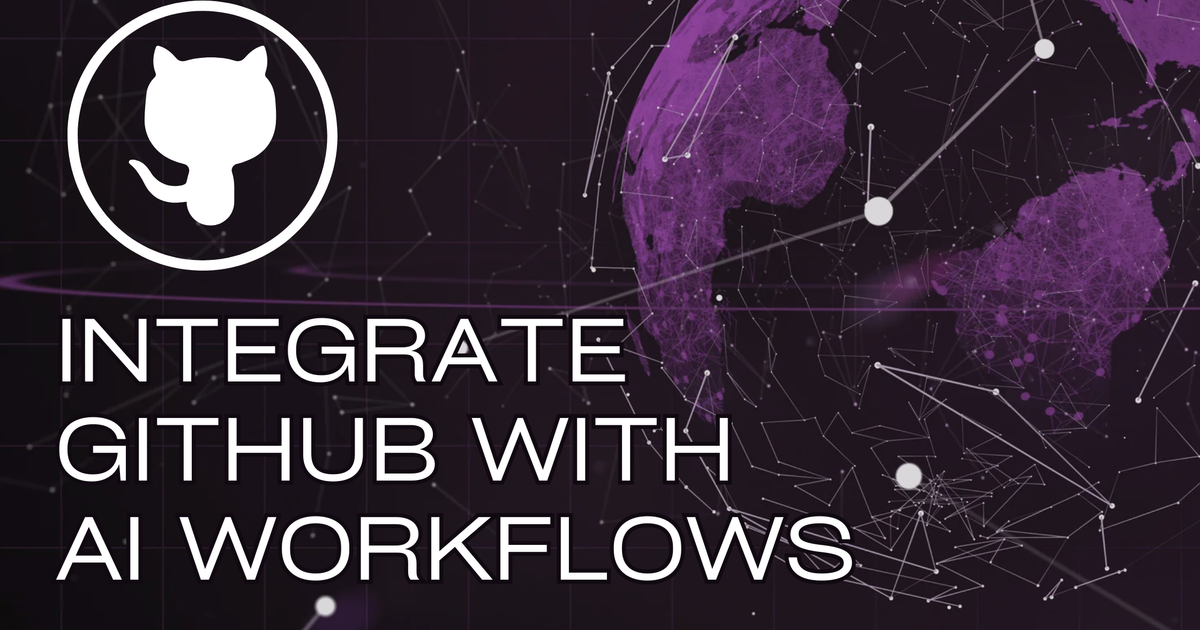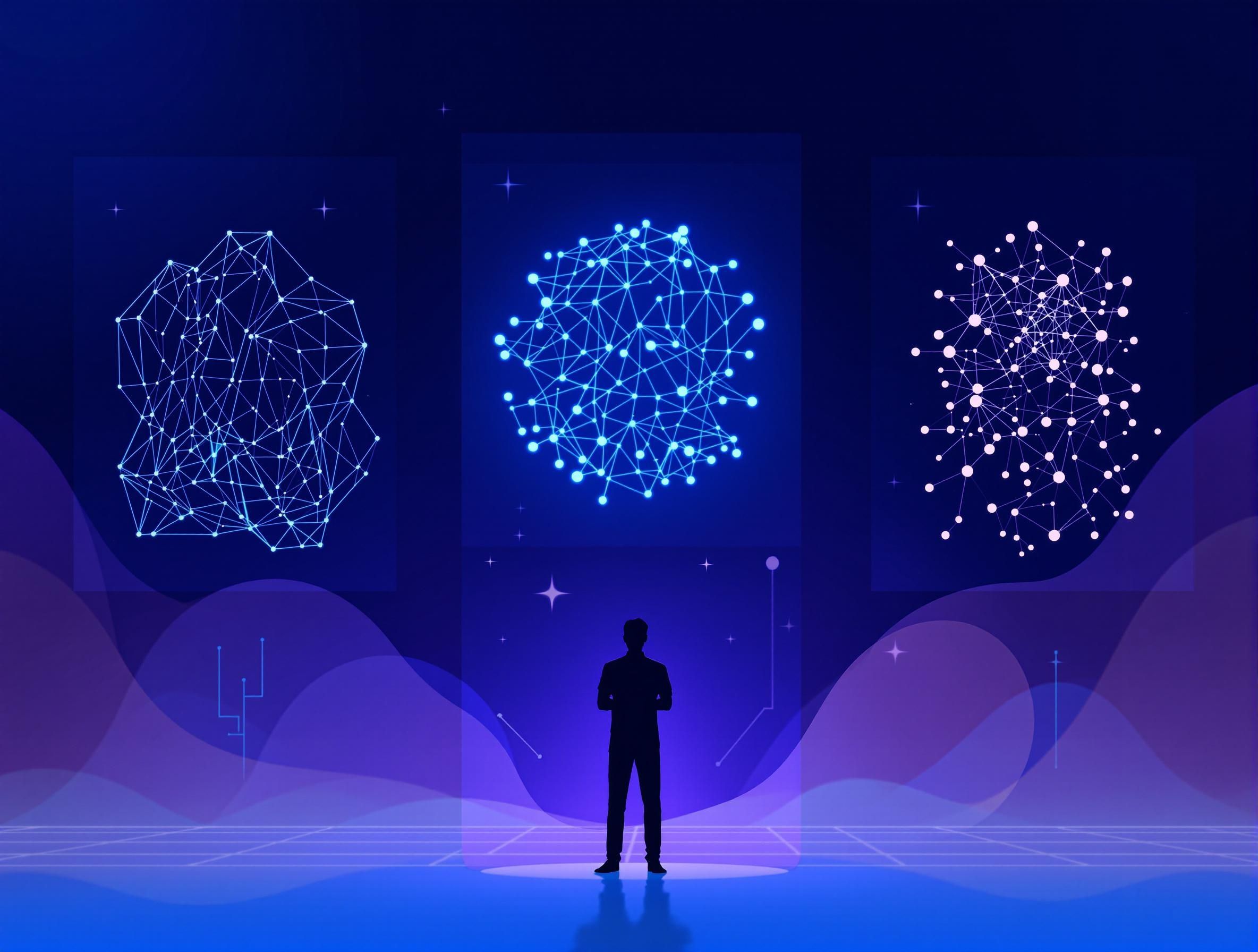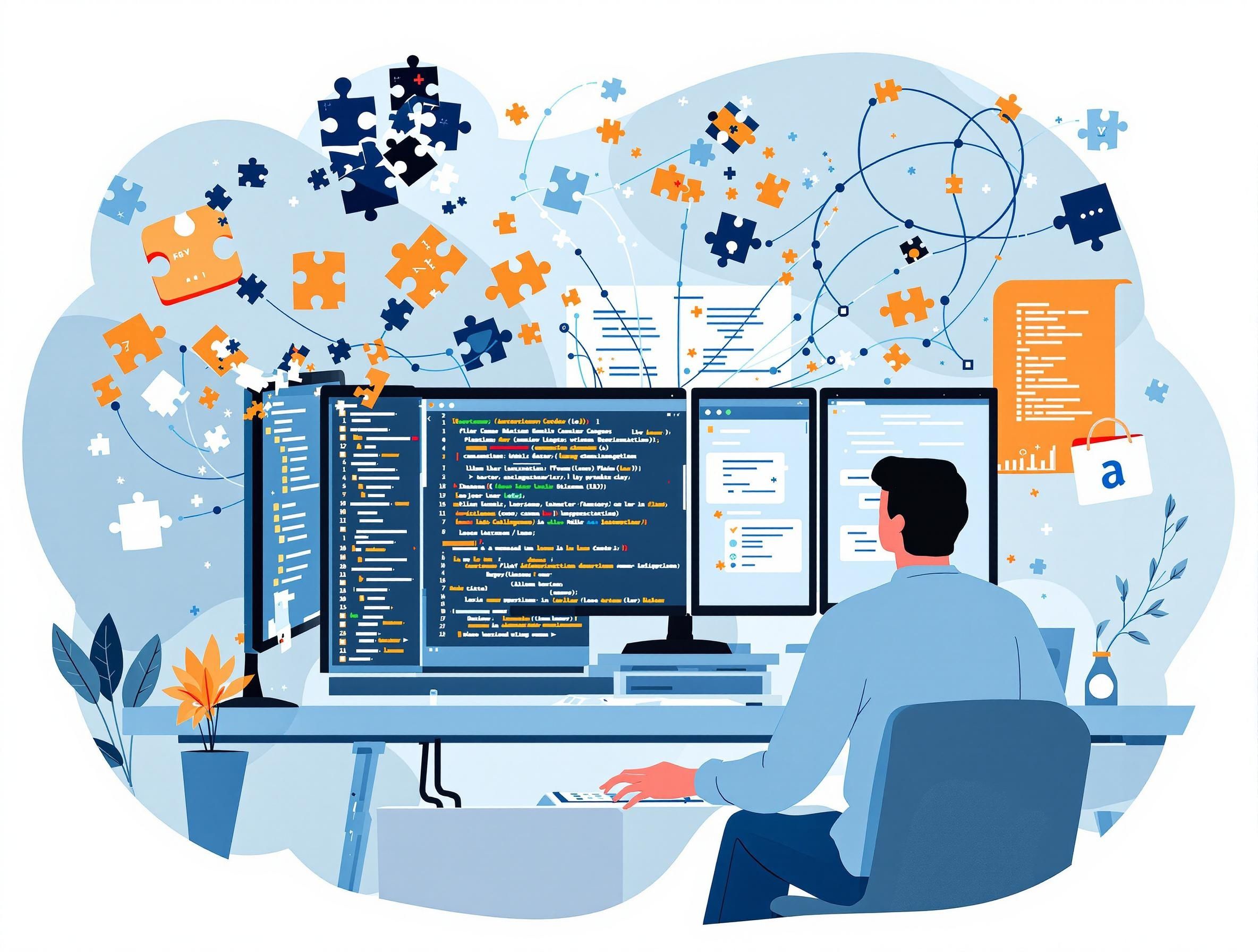
Integrating Git with AI
Complete guide to connecting your GitHub repositories with Vectly for seamless AI-powered code assistance and project management.
Integrating Git with AI: Why Your Repository Should Be Your AI's Memory
Modern development workflows generate massive amounts of context—commit histories, branch strategies, code reviews, and architectural decisions. Yet most AI tools treat your codebase as a static snapshot, missing the rich evolutionary story that Git repositories contain.
Here's why Git integration transforms AI-assisted development and how to leverage it effectively.
The Problem with Static Code Analysis
When you upload individual files to AI tools, you lose crucial context:
Missing Evolution: No understanding of how code has changed over time Lost Decisions: Commit messages and PR discussions contain architectural reasoning Incomplete Picture: Current code doesn't explain why certain patterns exist No Collaboration Context: Team discussions and code review insights are invisible
This static approach forces you to manually explain project history, architectural decisions, and team conventions every time you need AI assistance.
Why Git Integration Changes Everything
1. Historical Context Awareness
Your repository contains years of development decisions:
- Commit messages explain the "why" behind code changes
- Branch history shows feature development patterns
- Merge commits reveal integration strategies
- Tag history marks significant milestones and releases
2. Collaborative Intelligence
Git repositories capture team knowledge:
- Code review comments contain architectural discussions
- Issue references link code to business requirements
- Author patterns show expertise areas and code ownership
- Contribution history reveals team dynamics and knowledge distribution
3. Architectural Evolution
Understanding how systems grow:
- Refactoring patterns show architectural improvements over time
- Dependency changes reveal technology adoption decisions
- File movement history explains current project structure
- Performance improvements documented through commit history
Real-World Benefits of Git-AI Integration
Smarter Code Reviews
AI can reference:
- Similar changes made in the past
- Patterns established by senior developers
- Previous discussions about architectural decisions
- Historical performance implications of similar code
Better Debugging Assistance
AI understands:
- When bugs were introduced (git blame context)
- Previous fixes for similar issues
- Code patterns that have caused problems before
- Successful debugging strategies from commit history
Informed Refactoring Suggestions
AI considers:
- Previous refactoring attempts and their outcomes
- Code patterns that have evolved successfully
- Team preferences established through past changes
- Breaking changes and their impact patterns
Contextual Documentation
AI can generate documentation that includes:
- Historical context for design decisions
- Evolution of API interfaces
- Deprecated patterns and their replacements
- Team conventions established over time
Technical Implementation Approaches
Repository Cloning
Full Repository Access:
- Clone entire repository for complete history
- Process all branches and tags
- Index commit messages and metadata
- Maintain real-time synchronization
Pros: Complete context, full history access Cons: Large storage requirements, complex synchronization
API-Based Integration
GitHub/GitLab API Integration:
- Fetch repository metadata via APIs
- Access commit history and PR discussions
- Real-time webhook updates
- Selective data retrieval
Pros: Efficient data usage, real-time updates Cons: API rate limits, requires authentication management
Hybrid Approaches
Smart Selective Sync:
- Recent commits and active branches in full detail
- Historical data summarized and indexed
- On-demand deep history retrieval
- Intelligent caching strategies
Security and Privacy Considerations
Repository Access Permissions
- Read-only access: AI should never modify your repository
- Scope limitations: Access only necessary branches and metadata
- Team permissions: Respect existing repository access controls
- Audit trails: Log all AI access to repository data
Sensitive Data Handling
- Credential scanning: Avoid indexing secrets or API keys
- PII detection: Filter out personal information from commit messages
- Compliance requirements: Meet industry-specific data handling requirements
- Data retention: Clear policies on how long repository data is stored
Platform Implementation Examples
GitHub Integration Patterns
Most platforms implementing Git integration follow similar patterns:
OAuth Authentication: Secure, user-controlled access to repositories Webhook Synchronization: Real-time updates when repositories change Selective Indexing: Choose which repositories and branches to include Metadata Processing: Extract and index commit messages, PR discussions, and file changes
For example, platforms like Vectly implement GitHub integration by allowing users to connect their repositories directly, providing the AI with complete project context including file structure, commit history, and development patterns. This enables the AI to understand not just current code, but the reasoning behind architectural decisions and the evolution of the project over time.
Integration Best Practices
Repository Selection:
- Start with active development repositories
- Include both current and recently archived projects
- Consider monorepo vs. multi-repo strategies
- Balance context richness with processing overhead
Branch Strategy:
- Always include main/master branch
- Include active feature branches
- Consider release branches for context
- Archive old branches to reduce noise
Update Frequency:
- Real-time updates for active development
- Daily sync for stable repositories
- On-demand refresh for archived projects
- Smart change detection to minimize processing
Measuring Integration Effectiveness
Context Quality Metrics
- Relevance: Does AI surface appropriate historical context?
- Accuracy: Are references to past changes correct?
- Completeness: Does AI understand the full project evolution?
- Timeliness: Are recent changes reflected quickly?
Development Productivity
- Reduced explanation time: Less manual context providing
- Better suggestions: More contextually appropriate recommendations
- Faster onboarding: New team members get AI assistance with full project context
- Improved debugging: Historical context speeds problem resolution
The Future of Git-AI Integration
As AI tools become more sophisticated, Git integration will evolve to include:
Semantic Understanding: AI that understands code changes at a conceptual level Predictive Analysis: Suggestions based on historical patterns and team behavior Automated Documentation: Context-aware documentation generation from commit history Intelligent Code Review: AI reviewers that understand team standards and historical decisions
Getting Started with Git-AI Integration
If you're considering Git integration for your AI development workflow:
- Assess your repository structure: How much historical context would benefit your AI interactions?
- Evaluate security requirements: What data can safely be shared with AI platforms?
- Choose integration depth: Full repository access vs. selective metadata integration
- Test with non-sensitive repositories: Start with open-source or internal tool repositories
- Measure the impact: Compare AI assistance quality before and after Git integration
The goal is transforming your AI assistant from a code-aware tool into a project-aware collaborator that understands your development history, team patterns, and architectural evolution.
Ready to give your AI assistant complete project context? Connect your GitHub repositories to Vectly and experience AI that understands your code's full history and evolution.


